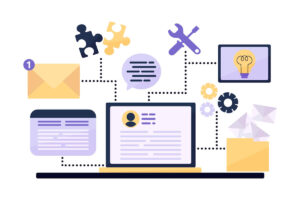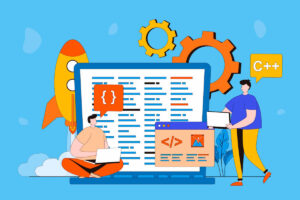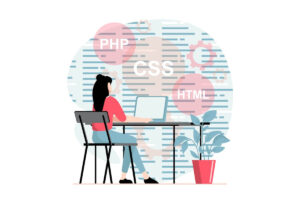In today’s fast-paced digital world, businesses are constantly seeking ways to streamline processes, increase efficiency, and reduce development time. One popular solution that has gained traction in recent years is migrating to a PHP low code platform. This guide will walk you through the steps involved in migrating to a PHP low code platform, ensuring a smooth transition and maximum benefits for your business.
Step 1: Evaluate Your Current System
Before embarking on the migration journey, it is crucial to evaluate your current system and identify pain points, inefficiencies, and areas for improvement. Take stock of your existing PHP applications, infrastructure, and development processes to determine the scope of the migration project. This will help you set realistic goals, allocate resources effectively, and ensure a successful migration.
- Conduct a thorough analysis of your current PHP applications to identify areas that need improvement.
- Assess the performance and scalability of your existing infrastructure to understand the impact of migration.
- Engage with stakeholders and end-users to gather feedback on usability and functionality of current systems.
Step 2: Research PHP Low Code Platforms
Once you have a clear understanding of your current system, it’s time to research PHP low code platforms that align with your business requirements and goals. Look for platforms that offer robust features, scalability, security, and support for PHP development. Consider factors such as ease of use, integration capabilities, and pricing to make an informed decision.
- Explore different PHP low code platforms available in the market and compare their features and functionalities.
- Consider the level of support and documentation provided by each platform to ensure a smooth transition.
- Look for case studies and testimonials from other businesses that have successfully migrated to the platform.
Step 3: Choose the Right Platform
After conducting thorough research, select a PHP low code platform that best suits your business needs. Consider factors such as compatibility with existing systems, customization options, and vendor reputation. It’s essential to choose a platform that aligns with your long-term goals and provides flexibility for future growth.
- Evaluate the level of customization and flexibility offered by each platform to meet your specific business requirements.
- Consider the scalability of the platform to accommodate future growth and expansion of your applications.
- Review the vendor’s reputation and track record in delivering quality products and services.
Step 4: Plan the Migration Process
Once you have chosen a PHP low code platform, it’s time to plan the migration process. Create a detailed migration plan that outlines the steps involved, timelines, resource allocation, and potential challenges. Consider factors such as data migration, application re-architecture, testing, and training to ensure a seamless transition to the new platform.
- Develop a comprehensive project plan that includes key milestones, responsibilities, and timelines for each phase of the migration.
- Allocate resources and budget for the migration project to ensure smooth execution and timely completion.
- Identify potential risks and challenges that may arise during the migration process and develop contingency plans to mitigate them.
Step 5: Data Migration
One of the critical aspects of migrating to a PHP low code platform is data migration. Ensure that you have a robust data migration strategy in place to transfer data securely and efficiently from your existing system to the new platform. Test the data migration process thoroughly to identify any potential issues and ensure data integrity.
- Perform a data audit to identify the types of data that need to be migrated and develop a migration strategy accordingly.
- Test the data migration process in a controlled environment to ensure that data is transferred accurately and without loss.
- Implement data validation checks to verify the integrity and consistency of the migrated data on the new platform.
Step 6: Application Re-Architecture
Depending on the complexity of your existing PHP applications, you may need to re-architecture them to align with the new platform’s requirements. Work closely with your development team to refactor code, optimize performance, and ensure compatibility with the PHP low code platform. Testing is crucial at this stage to identify and resolve any compatibility issues.
- Collaborate with your development team to review the architecture of your existing applications and identify areas for improvement.
- Refactor code to adhere to best practices and coding standards recommended by the PHP low code platform.
- Conduct thorough testing to ensure that the re-architected applications perform optimally and meet the requirements of the new platform.
Step 7: Testing and Quality Assurance
Before fully transitioning to the new PHP low code platform, conduct rigorous testing and quality assurance to ensure that the applications function as intended. Test for compatibility, performance, security, and user experience to identify and address any issues before going live. It’s essential to involve stakeholders and end-users in the testing process to gather feedback and make necessary adjustments.
- Develop a comprehensive testing plan that includes different types of testing such as unit testing, integration testing, and user acceptance testing.
- Use automated testing tools to streamline the testing process and identify defects early in the development cycle.
- Involve end-users in the testing process to gather feedback on usability, functionality, and performance of the applications.
Step 8: Training and Support
As you prepare to launch your applications on the new PHP low code platform, provide comprehensive training and support to your development team and end-users. Ensure that they are familiar with the platform’s features, functionality, and best practices to maximize productivity and adoption. Offer ongoing support and resources to address any questions or issues that may arise post-migration.
- Develop training materials and resources to educate your development team and end-users on the features and functionalities of the new platform.
- Conduct training sessions and workshops to ensure that users are proficient in using the platform effectively.
- Establish a support system to address any technical issues or questions that may arise post-migration and provide timely resolutions.
Step 9: Go Live and Monitor Performance
Once you have completed the migration process and conducted thorough testing, it’s time to go live with your applications on the new PHP low code platform. Monitor performance closely in the initial days to identify any performance bottlenecks, bugs, or issues. Implement monitoring tools and processes to track performance metrics and user feedback to optimize the platform continually.
- Monitor the performance of your applications in real-time to identify any performance issues or bottlenecks.
- Implement performance monitoring tools to track key metrics such as response time, server load, and user interactions.
- Gather feedback from end-users and stakeholders to make continuous improvements to the platform and enhance user experience.
By following this step-by-step guide to migrating to a PHP low code platform, you can streamline processes, increase efficiency, and drive innovation in your business. Embrace the power of low code development to accelerate your digital transformation journey and stay ahead in today’s competitive landscape.
Ready to streamline your development process with a PHP low-code platform? Contact us today to discuss your specific needs and explore how we can help you achieve your business goals.
FAQs:
Why is it important to evaluate your current system before migrating to a PHP low code platform?
It is crucial to evaluate your current system to identify pain points, inefficiencies, and areas for improvement, which will help set realistic goals, allocate resources effectively, and ensure a successful migration.
What factors should be considered when researching PHP low code platforms?
When researching PHP low code platforms, factors such as robust features, scalability, security, support for PHP development, ease of use, integration capabilities, and pricing should be taken into consideration.
How do you choose the right PHP low code platform for your business?
To choose the right PHP low code platform, consider factors such as compatibility with existing systems, customization options, vendor reputation, alignment with long-term goals, and flexibility for future growth.
Why is planning the migration process important when migrating to a PHP low code platform?
Planning the migration process is essential to create a detailed plan outlining steps, timelines, resource allocation, potential challenges, data migration, application re-architecture, testing, and training to ensure a seamless transition to the new platform.












+ There are no comments
Add yours